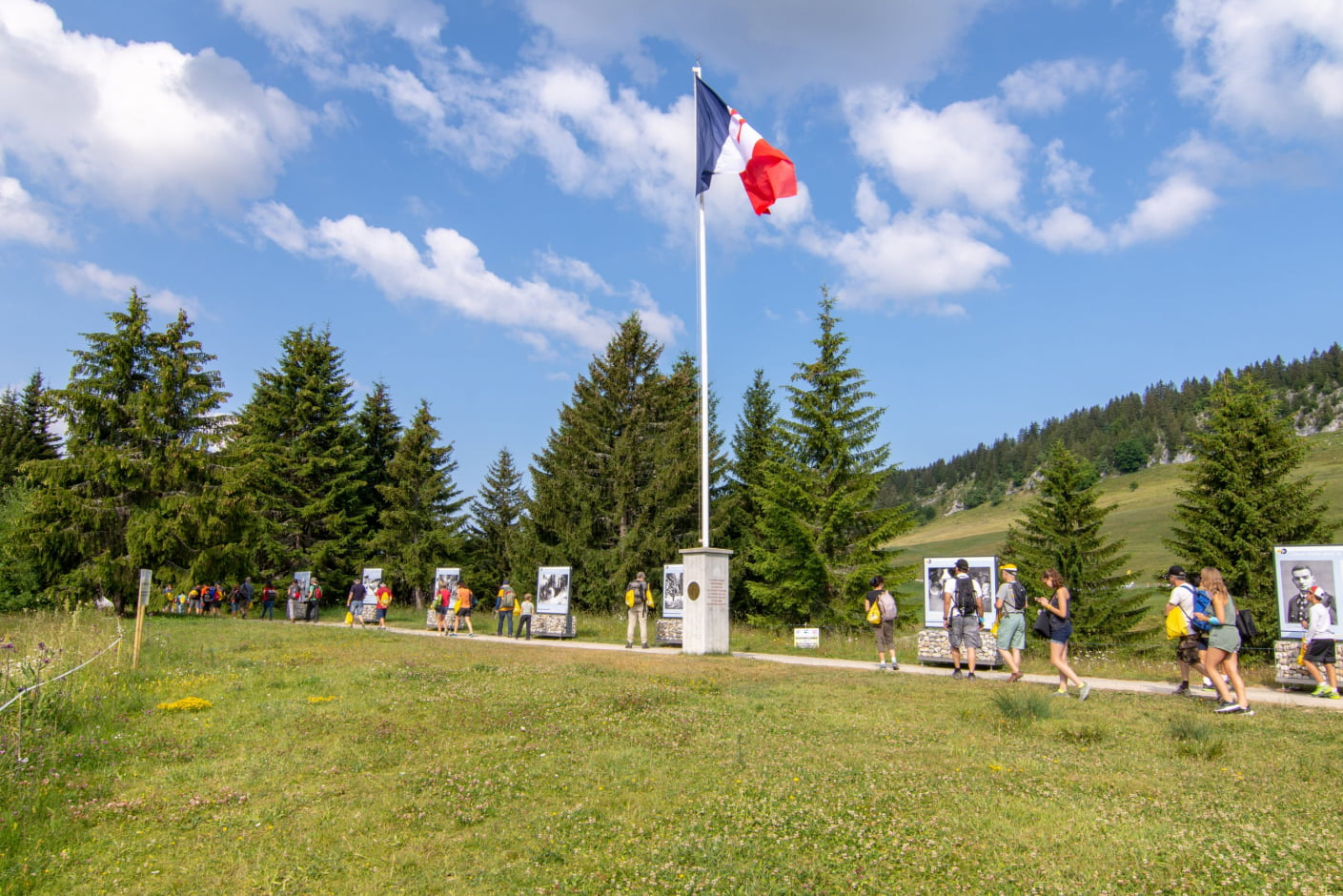- Tours
Understanding the french resistance on the Plateau des Glières

THE PLATEAU DES GLIÈRES TRAIL
Located in the heart of the Bornes mountain range, the Plateau des Glières was chosen by the Allies in January 1944 as the grounds for air dropping arms needed by the Resistance in the Haute-Savoie. First under the command of Lieutenant Tom Morel and then Captain Maurice Anjot, 465 young men vowed to fight for freedom to the end. The inhabitants of the valleys provided them with food and supplies, and they resisted the Vichy forces two months before conceding partially on 26 March after an attack by the Wehrmacht alpine troops. One hundred and twenty-nine fighters lost their lives. Nevertheless, the survivors quickly regrouped in the surrounding hills.
A historic trail runs along the air drop zones, marked by signs explaining the daily life of the Resistance on the plateau in 1944.
FROM 1944 TO...
On 1 August 1944, a massive arms delivery helped them definitively knock down the occupying army. General de Gaulle would say later,
Thanks to Glières, I obtained the important air drops for the Resistance’.
19 August 1944, Annecy, Hôtel Splendid. It was 10.00 a.m. at the Kommandantur headquarters when the German colonel commanding the occupying forces in the Haute-Savoie officially surrendered to the local Resistance. After months of combat, the act ended one of the dramatic events of World War II in France. The Haute-Savoie became the first zone to be freed entirely by French Resistance forces.
TODAY
Today, the plateau is considered a historic site in the eyes of France. The majestic National Monument to the Resistance, created by sculptor Emile Gilioli, has been welcoming visitors since 1973.
The monument is owned by the Haute-Savoie departmental council, which hosts many on-site visits and exhibits. Each year, 2,000 pupils in the plateau region trek the Trails of the Maquis following the “Rando Glières” programme.
Several kilometres away, Morette also throws us back in time.
A HISTORIC SITE OF REMEMBRANCE
NATIONAL CEMETERY OF THE GLIÈRES
On the border of the towns of Thônes and La Balme de Thuy, the Germans took a group of 25 members of the Maquis by surprise during the night between 27 and 28 March.
The members were executed and their bodies left on the banks of the stream, where they were discovered a few days later. Although the German leaders first refused proper burials for these ‘terrorists’, they caved in under the insistence of Mayor Louis Haase.
The first burial sites were dug on 1 April, facing the waterfalls cascading from the plateau. As soon as the Haute-Savoie was liberated, Morette became the burial ground for most of the members of the Maquis killed in the Glières area. More than 500 members have been laid to rest in the National Cemetery of the Glières.

MUSEUM AND MEMORIAL
A few feet away, the local Resistance Museum retraces the history of the Maquis and the liberation of the Haute-Savoie.
The Deportation Museum provides deeply moving testimonies about the Nazi camps.
Magazine Emotions n°13 / Céline Combier - YPM




